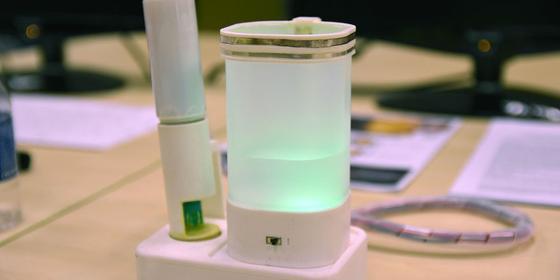Summary: It's kind of hot, this environment right? Let's have a glass of water, or lemonade, something nice. All senses of our body are connected, we know that. And technology knows it too, people behind new wave of modernism are always trying to increase the level of sensation we can access to, and the taste is not being left out of this development process at all. It seems like now tasting something that is not physically here with us might be possible thanks to the work of students at the Public
It's kind of hot, this environment right? Let's have a glass of water, or lemonade, something nice.
All senses of our body are connected, we know that. And technology knows it too, people behind new wave of modernism are always trying to increase the level of sensation we can access to, and the taste is not being left out of this development process at all.
It seems like now tasting something that is not physically here with us might be possible thanks to the work of students at the Public University of Singapore and the mind of Nimesha Ranasinghe, breaking once again the barriers of distance they have posed this interesting alternative for sharing something else than communication with people abroad, and start sharing sensations too.
The deal is about how to transport the taste of something like a beverage to a remote location via virtualization, transmit digitally the color, the main properties of color and sweet levels, sourness, etc; of a juice for example, into a glass of water.
The assembled team decided to pursue their first trials with the flavor of lemonade and the result was amazing!
Beforehand you should know that in order to accomplish that they used two special tumblers equipped with the right technology to translate the information of the flavor; one of the items had the lemonade and the other contained the water. While the first one assimilated all the properties and flavor identity of the juice, then the data gets sent into a digital storage where the other smart article start mimicking the stalagmites of the flavor and once a person drinks from that remote tumbler, tiny pulses of electricity will stimulate the tongue’s buds in order to make it assimilate the pretended flavor.
World of possibilities
The experiment goes further and of course requires to be tested by externals, so a group of a dozen of people got to taste the diverse digital lemonades made by the team.

By giving three different samples to the invited people, the students learned that the combination of scent and looks that were closer to natural lemonade (cloudy white, slightly greenish) and stimulation via the rim of the tumbler resulted in the most faithful digital transmutation of the real deal.
The other options which were yellow and green were not as successful and it is believed that it was because of the lack of look alikeness to the original lemonade we all know. The sour component was barely felt even though all of the participants rested their tongue on the rims for the smooth electrical impulse.
The expert and founder of the idea, Nimesha Ranasinghe, claims that work is not done yet and that this is barely step one, since the real goal is to accomplish the reality of people sharing virtual flavourings and promote sensations through the internet, being able to have a taste on those provocative things we see and share every day is part of the upcoming future, and the team of Singapore University wants to be the firsts to get it right.
3 years, 5 months ago
Tnx for welcomemr
reply